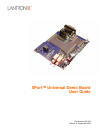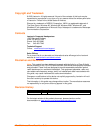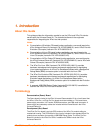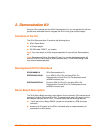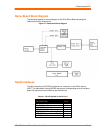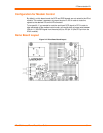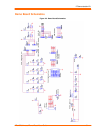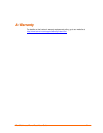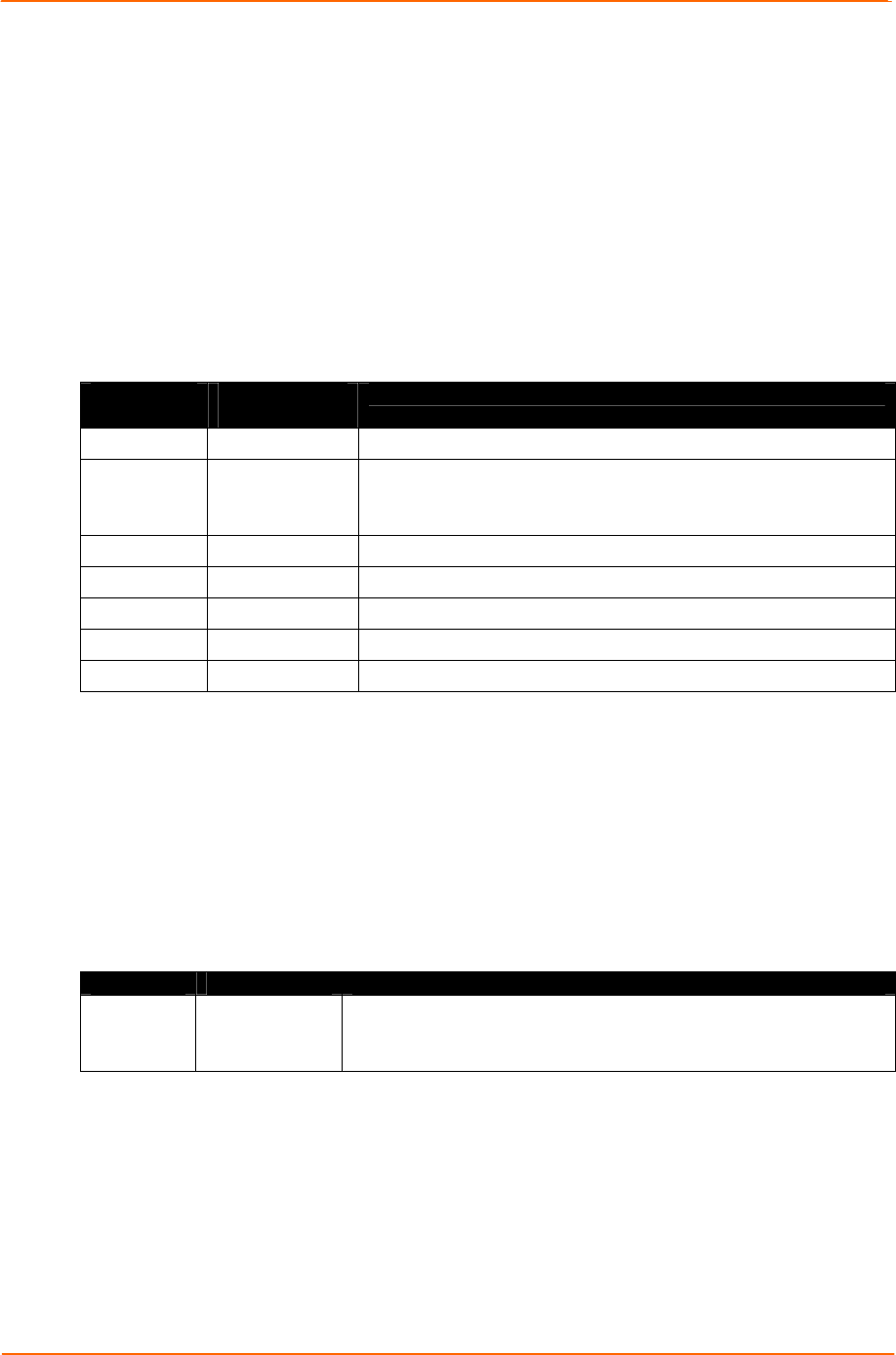
2 Demonstration Kit
XPort™ Universal Demo Board User Guide 8
Power Supply
The demo board uses an external 3.3V regulated supply (included with kit).
General Control
The following tables denote the configuration of the demo board. Configuring the
jumpers re-routes signals on the demo board to use as Serial control signals, or to
connect to other places on target board as General Purpose IO (GPIO).
Configuration Switch Bank
Table 2-2. Demo Board JP6 Jumper Configuration for CON1
JP6
pin/Signal
JP6
pin/Signal
Function
1/TXD 2/TXD Jumper 1-2, Send TXD to RS232 transceiver.
3/RTS 4/RTS/CP1 Jumper 3-4, Send RTS to RS232 transceiver. For
connection to an additional RS485 transceiver, RTS
would be used to drive the transceiver TX enable.
5/DTR 6/DTR/CP2 Jumper 5-6, Send DTR/CP2 to RS232 transceiver.
7/RXD 8/RXD Jumper 7-8, Receive RXD from RS232/485 transceiver.
9/CTS 10/CTS/CP3 Jumper 9-10, Receive CTS from RS232 transceiver.
11/DSR 12/NC Jumper 11-12. Unused, auxiliary transceiver receive port.
13/DCD 14/NC Jumper 13-14, Unused, auxiliary transceiver receive port.
Note: CP arrangement in the tables above is for demonstration purposes only. All
CPs can be used as GPIOs. In XPort Pro custom applications, any CP can be
assigned as any function except that only CP1 can be assigned to RTS in RS232
mode or TX Enable in RS485 Mode, and only CP3 can be assigned to CTS in RS232
Mode. In XPort custom applications (RS232 mode), only CP1 can be assigned to
RTS, only CP2 can be assigned to DTR, and only CP3 can be assigned to CTS.
Note: NC=Not Connected to the XPort module. These pins can be assigned as
needed using jumpers.
Table 2-3. Demo Board R16 Configuration
Pin/Signal
Pin/Signal Function
1/3V3 2/3V3_XPort
XPort UUT power input resistor for current measurement.
Resistor can be replaced by a wire loop or other resistor
value for UUT power measurements



